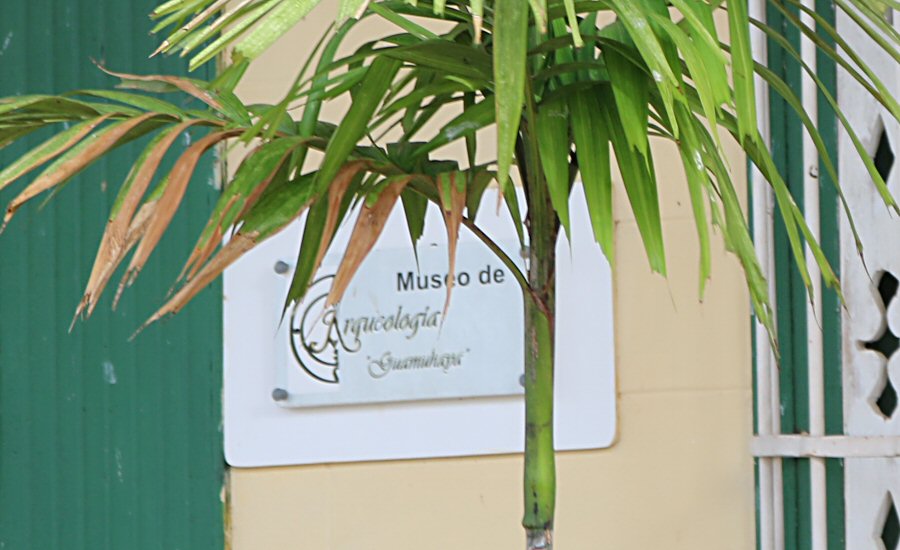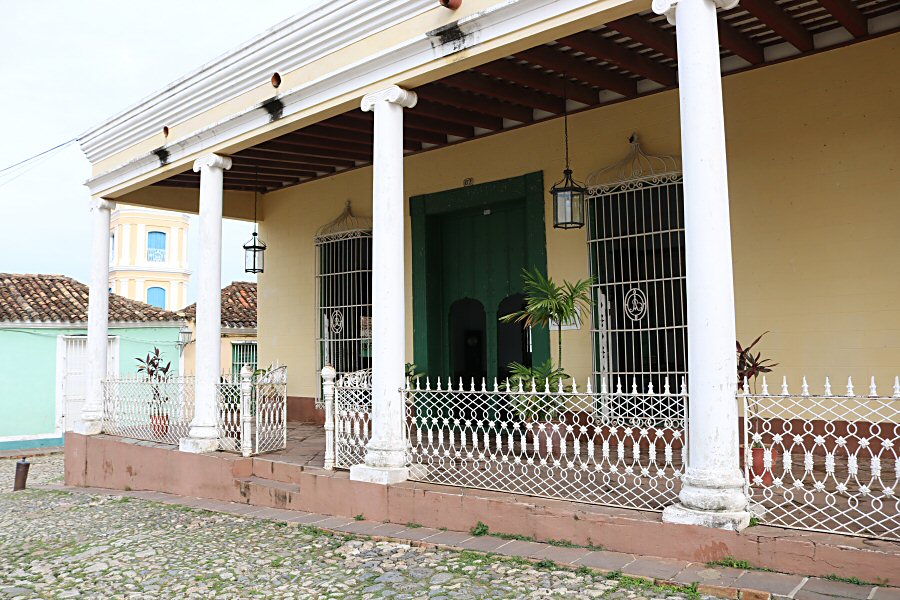Localization
Museo de Arqueología Guamuhaya is
located on the northwestern side of Plaza Mayor, on Desengaño
street #457, between the Real del Jigüe and the Cristo streets.
Opening Hours
every day 10:00 - 18:00


Museo de Arqueología Guamuhaya, located in an 18th building historically known as Casa Padrón, is a research and educational institution specialized in the period of prehistoric Cuba, as well as the conquest period of Cuba.
Guamuhaya, more commonly known as Sierra del Escambray, is the name of the mountainous territory located in the south of the central region of Cuba, between the dome of Cubanacán (Alturas de Santa Clara) and the Caribbean Sea. Though the meaning of the name Guamuhaya is uncertain, it is known that it derives its origin from the Taino language of the first inhabitants of Cuba. “Gua” means source or birth, “mu” development, and “has” associate. This name appears for the first time on a map of the Cuban archipelago by José María de la Torre, dated 1873.
History
It is known that the building was built at an unknown date in the 18th century. There is a possibility that the first owner of the house was Juan Marín. In 1757, Juan Marín sold the house that was not fully finished to Ángela Josefa Borrell y Padrón. Thus, the house, completed in 1835, was called as the Casa Padrón. The aristocrate family of Ángela Josefa Borrell y Padrón was enriched by the sugar trade. She owned a vast sugar cane plantation in Trinidad and the sugar mill, Nuestra Señora de los Ángeles (later called, Agua Hedionda).
In 1804, the famous scientist Alexander von Humboldt stayed in this house, and met with all the major landowners of Trinidad who made their fortunes from the sugar cane trade. The address of the house at that time was Cristo Street #33. A bust of him was erected in the courtyard in memory of this visit.
After the house was purchased by Ángela Borrell y Padrón, she notably modified the building and made some additions to use it as her mansion. The main façade overlooking the Real del Jigüe street that was the main road in accordance with the aristocratic hierarchy in the 18th century, has been completely remodeled at the request of Ángela Borrell y Padrón and the main façade of the house which was still under construction, has been made facing the Church Square (today’s Plaza Mayor), as the square became the main square after a process of reorganization of public spaces and urban layout. The interior walls were adorned with murals and the roof was extended. A neoclassical portal was added in 1840, so that it gained its current appearance.
When Ángela died in 1854, without descendants, the house passed into the hands of her great-niece, Nicolasa Sánchez Iznaga. After the revolution the house had several users.
After a detailed restoration under the direction of renowned archaeologist Alfredo Rankin Santander, it was opened to serve as the the Museum of Natural Sciences on May 15, 1976, but in 1990 it started to function as the Museo de Arqueología Guamuhaya.
